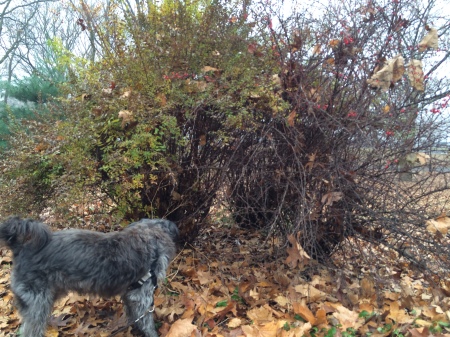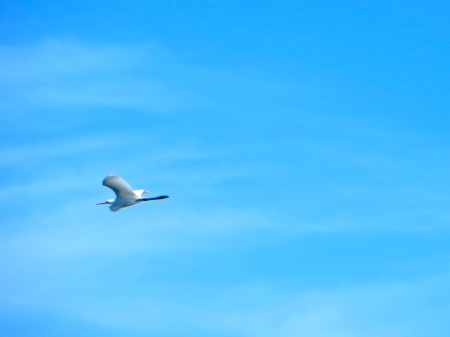On a recent walk in Riverside Park, the dog stopped to investigate a fallen wasp’s nest.
What a beautiful little structure. Let’s take a closer look.
Look, one little creature seems to have died in the process of crawling out of a hole. How strange.
But who precisely built this nest? What kind of wasp? A hornet? A yellow jacket?
It’s been my experience that naturalists, both professional and amateur, are eager to share, expand and refine their knowledge about the world we live in, and interestingly, the technology of social media provides a swift and effective way to share knowledge. I sent out a query on Twitter, asking “Whose fallen nest is this in Riverside Park?”
Matthew of Backyard and Beyond quickly replied, “Paper wasp, probably Bald-face Hornet.” Andrew of Urban Ecology and Science Research soon responded with a photo of a much larger, enclosed nest hanging from a tree at Storm King Art Center, saying he was seeing these hives all over.
Chris of Flatbush Gardener believes Andrew’s hive to belong to Bald-faced Hornets, adding: “More visible without leaves,” which I take to mean that the nests seem to be suddenly everywhere only because they are more visible now that the trees are growing bare.
And it’s true: one sees things differently when trees are bare. One also sees, quite literally, different things, including, perhaps, hornet’s nests. There may be fewer birds around in winter now that most of the migrants have moved on, but the ones that stay, from Northern cardinals to Red-tailed hawks, are easier to spot when they perch on leafless branches.
Squirrels, too, have fewer places to hide. And if I may act for a moment as a squirrel real estate agent, I’d like to recommend a couple of deep and lovely tree holes as fine living quarters.
Non-living natural things – what ecologists call abiota – also emerge from obscurity in winter. The structure of the land, its slopes and cliffs, all hidden in summer by leafy trees, bushes and undergrowth, reveals itself. And the Hudson River, seen in leaf-edged glimpses through much of the year, reclaims its place as a central feature of the far west side of the island.

Pointing the way to the Grant’s Tomb National Parks Service Visitor’s Center in Riverside Park around 123rd Street.
After the leaves have fallen, plants too reveal surprises. In summer, the two bushy plants below appear to be a single solid and impenetrable mass of green, the shoots drooping like willow branches all the way to the ground. But in late fall and winter, a beautiful hiding place is revealed at their heart where an animal like a fox, if only Riverside Park were lucky enough to host a fox, might curl up undetected.
The fallen leaves now cover the ground, obscuring its features and camouflaging small creatures. This seemingly empty patch of leaves was actually hopping with life, as junkos, house sparrows and squirrels scratched, dug and pecked for nuts and seeds.
Look. There goes one now.
Deep leaves often bury natural structures, like exposed tree roots or rat holes. Or dogs.
Here the dog investigates a rat hole at the base of a tree. Who’s there?
The other day, a naturalist friend, Kelly of Nature in a New York Minute, knowing my interest in rats, kindly brought me a NYC booklet with the elegant title, Preventing Rats on Your Property. I’ll write more about it some other time, but the fundamental message is simple: “To control rats, you have to remove everything they need to survive: food, water, shelter and ways to get around.” My own block has seen a bit of a decrease in rat activity since a few once-slovenly neighbor buildings started better securing their trash and closing up burrows at the base of street trees. But even so, rats still run rampant in the area. On a brief late night walk a few days ago, the dog and I saw three rats within two blocks.
And remember, the rats you see are just the tip of the ratty iceberg; beneath the surface of the street live scores – or hundreds – of others.
But wait, how is it I am talking about rats? I was talking about leaves, wasn’t I, and how they veil and reveal natural structures. Or was I talking about changing seasons? Or ways of seeing? Or, no, it was about naturalists sharing information. Oh, I remember now, I was talking about a wasp’s nest. Yes, a wasp’s nest. And here we are at a rat’s nest.
Well, that’s the way it is when you go out on a ramble. Even when every walk starts and ends at the same place, as so many of mine do, you never know where the path will take you along the way.























































































































